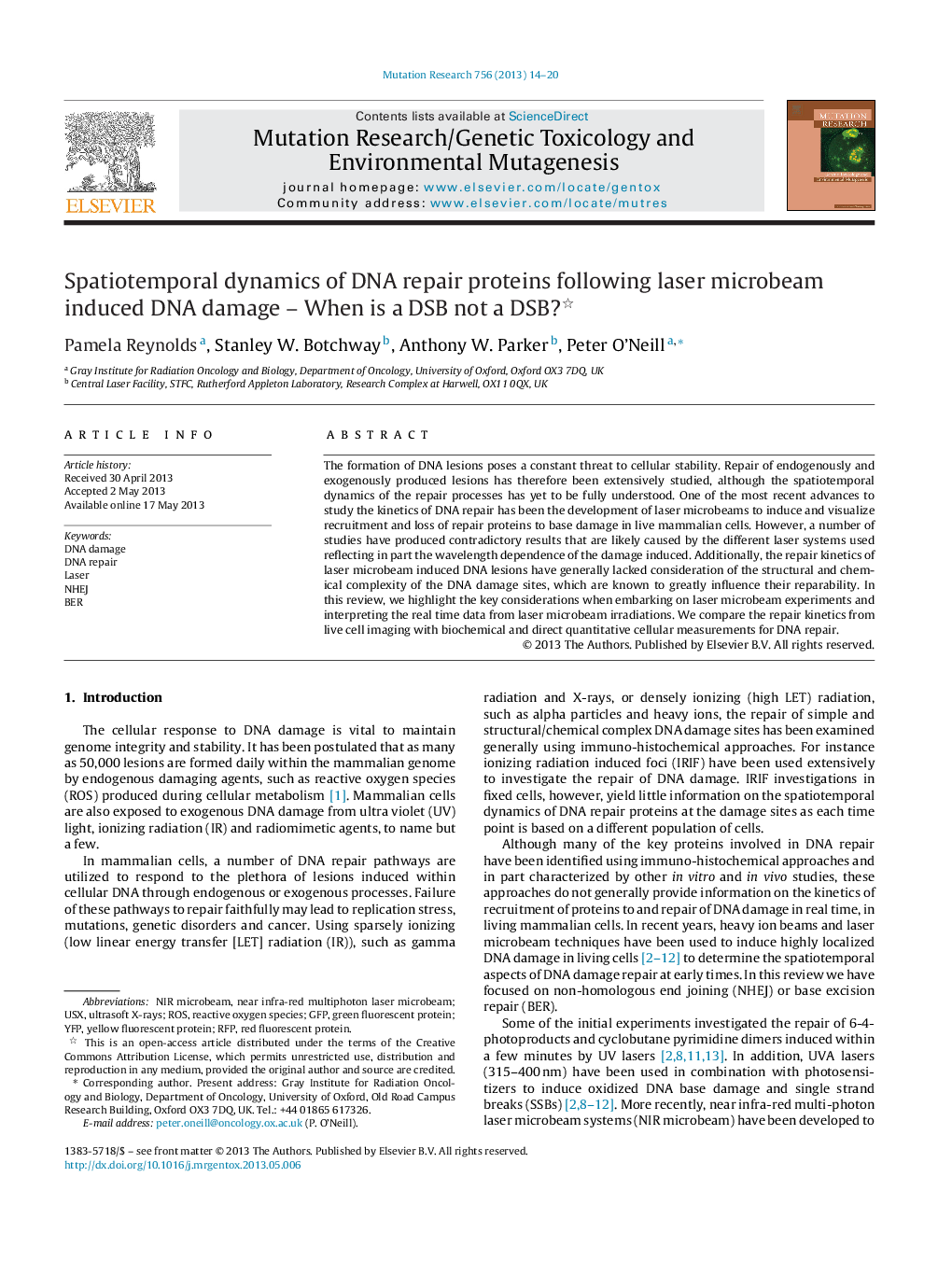| Article ID | Journal | Published Year | Pages | File Type |
|---|---|---|---|---|
| 8456496 | Mutation Research/Genetic Toxicology and Environmental Mutagenesis | 2013 | 7 Pages |
Abstract
The formation of DNA lesions poses a constant threat to cellular stability. Repair of endogenously and exogenously produced lesions has therefore been extensively studied, although the spatiotemporal dynamics of the repair processes has yet to be fully understood. One of the most recent advances to study the kinetics of DNA repair has been the development of laser microbeams to induce and visualize recruitment and loss of repair proteins to base damage in live mammalian cells. However, a number of studies have produced contradictory results that are likely caused by the different laser systems used reflecting in part the wavelength dependence of the damage induced. Additionally, the repair kinetics of laser microbeam induced DNA lesions have generally lacked consideration of the structural and chemical complexity of the DNA damage sites, which are known to greatly influence their reparability. In this review, we highlight the key considerations when embarking on laser microbeam experiments and interpreting the real time data from laser microbeam irradiations. We compare the repair kinetics from live cell imaging with biochemical and direct quantitative cellular measurements for DNA repair.
Keywords
Related Topics
Life Sciences
Biochemistry, Genetics and Molecular Biology
Cancer Research
Authors
Pamela Reynolds, Stanley W. Botchway, Anthony W. Parker, Peter O'Neill,
